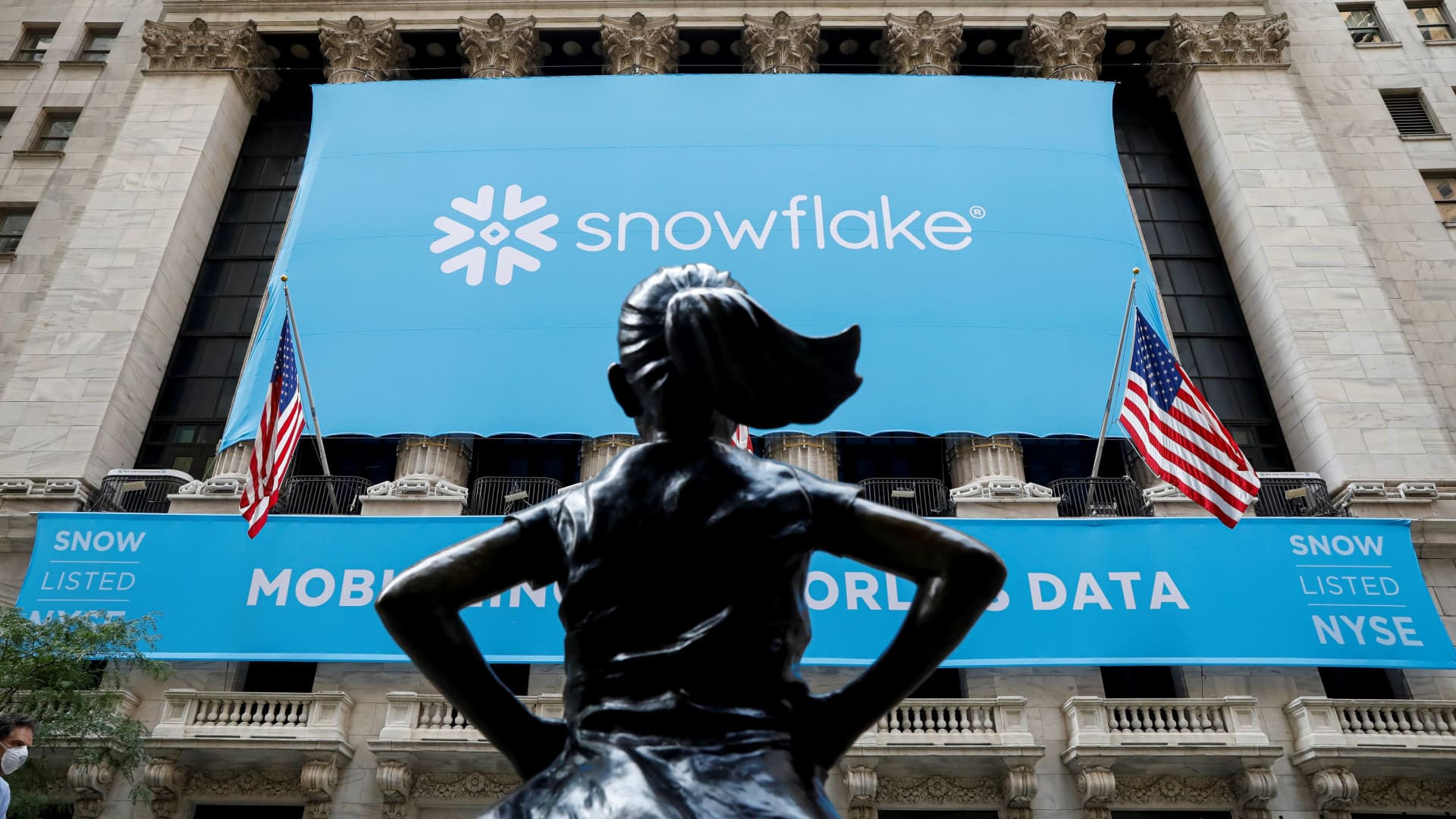Buried on page 280 of Instacart’s IPO filing last week was a paragraph that caused a brouhaha between two companies that have nothing to do with grocery delivery.
One of Instacart’s board members is Frank Slootman, the CEO of Snowflake, a publicly traded company that helps businesses store and manage hefty workloads in the cloud. Slootman joined Instacart’s board in 2021 and, because of that relationship, the company has to disclose its business ties to Snowflake.
On first blush, the Instacart spending figure looks troubling for Snowflake.
Instacart said it “made payments to Snowflake” of $13 million in 2020, a number that increased to $28 million in 2021 and $51 million in 2022 for the company’s “cloud-based data warehousing services.” The 2023 numbers appear to show a reversal, with Instacart saying “we anticipate we will pay Snowflake approximately $15 million” for the full year.
That would be a frightening 71% drop in payments.
But Snowflake would later say that those figures don’t tell the real story, a fact that’s mostly backed up by a footnote even deeper in the prospectus.
In the meantime, chaos ensued.
Employees of Snowflake rival Databricks pounced. They took to social media to highlight the apparent decline in spending on Snowflake and to suggest that it was the result of Instacart moving workloads to Databricks infrastructure.
Snowflake staffers fired back, claiming the numbers were being taken out of context, and accused Databricks of consistently spinning the narrative that it was taking business from Snowflake.
Many of the posts on Reddit, LinkedIn and X, the site formerly known as Twitter, have since been deleted.
Instacart did some deleting of its own.
In May, the company published a blog post titled “How Instacart Ads Modularized Data Pipelines With Lakehouse Architecture and Spark.” The post, which described software underpinning Instacart’s ads infrastructure, included discussion of a migration to Databricks’ Lakehouse technology and the cost savings that followed.
However, that blog was taken down as questions began to swirl following the IPO filing. A reader looking for the post now ends up on a page that says, “You’ve landed in the 404 errorverse.” Databricks also took down a case study detailing Instacart’s use of its technology, though its website still has presentations from earlier this year on the topic.
Representatives from Instacart, Snowflake and Databricks declined to to comment.
The controversy, which only came to light because Slootman is on Instacart’s board, has fanned the flames of a fierce rivalry between two companies battling it out in one of the hottest corners of technology, where cloud, data and artificial intelligence collide. It’s a conflict that’s made its way to social media plenty of times in the past, so much so that one Reddit user wrote a post a few months ago, titled “Databricks and Snowflake: Stop fighting on social.” A commenter responded, “Is this the pro-wrestling of data engineering?”
Snowflake went public in 2020, raising over $3 billion in the biggest U.S. IPO ever for a business software company. Even after last year’s market plunge, Snowflake has a market cap of over $50 billion.
Databricks is still private, but it’s one of the most richly valued venture-backed companies. Private investors valued the company at $38 billion in 2021, and Bloomberg reported last week that the company was in talks to raise funding at a $43 billion valuation.
To expand in AI, Snowflake recently acquired AI search engine Neeva for $185 million, while Databricks spent $1.3 billion on generative AI startup MosaicML.
What’s the real story with Instacart?
That brings us back to Instacart.
While Databricks is picking up business from the grocery-delivery company, the footnote in Instacart’s S-1 spelling out the relationship with Snowflake shows that the spending decline in 2023 is not the most relevant figure.
Rather, when it comes to how Instacart accounts for operating expenses — its actual usage of Snowflake — that amount was $28 million in 2021, $28 million 2022, and then $11 million in the first half of 2023. That’s still a drop this year, but on an annualized basis it would be around 21% instead of 71%.
To add to the confusion, the footnote under “Related Party Transactions” didn’t name Slootman or Snowflake, referring only to a “an executive officer of a software vendor.”
With the online chatter picking up, Snowflake wanted to clear up the picture, at least from its point of view. On Wednesday, the company published a four-paragraph blog post titled, “Snowflake and Instacart: The Facts.”
“In the past few days, the scope and trajectory of Instacart’s use of Snowflake has been misrepresented by some on social media,” the post begins. Nowhere is Databricks mentioned in the post, a consistent theme for Snowflake, which doesn’t name Databricks as a competitor in its financial filings.
Snowflake went on to say that it was working with Instacart to “optimize for efficiency,” a phrase that implies doing more with less, and that its technology is “used extensively by nearly every team within Instacart, including the catalog team, machine learning, ads, shoppers, retailers, customers, and logistics organizations.”
The post then highlights the usage figures from the filing footnote and claims that, “In some social media posts, payment schedules have been incorrectly conflated with actual usage to suggest a large decline in spending — this is not the case.”
In other words, if there’s a decline in spending, it’s not because we’re losing business to an unnamed company.
The good news for Snowflake is that the IPO process callsfor multiple prospectus updates. Instacart, which is trying to unlock a tech IPO market that’s been largely frozen for 20 months, will get a chance to clear up the matter with investors very soon.
— CNBC’s Jonathan Vanian and Jordan Novet contributed to this report.
